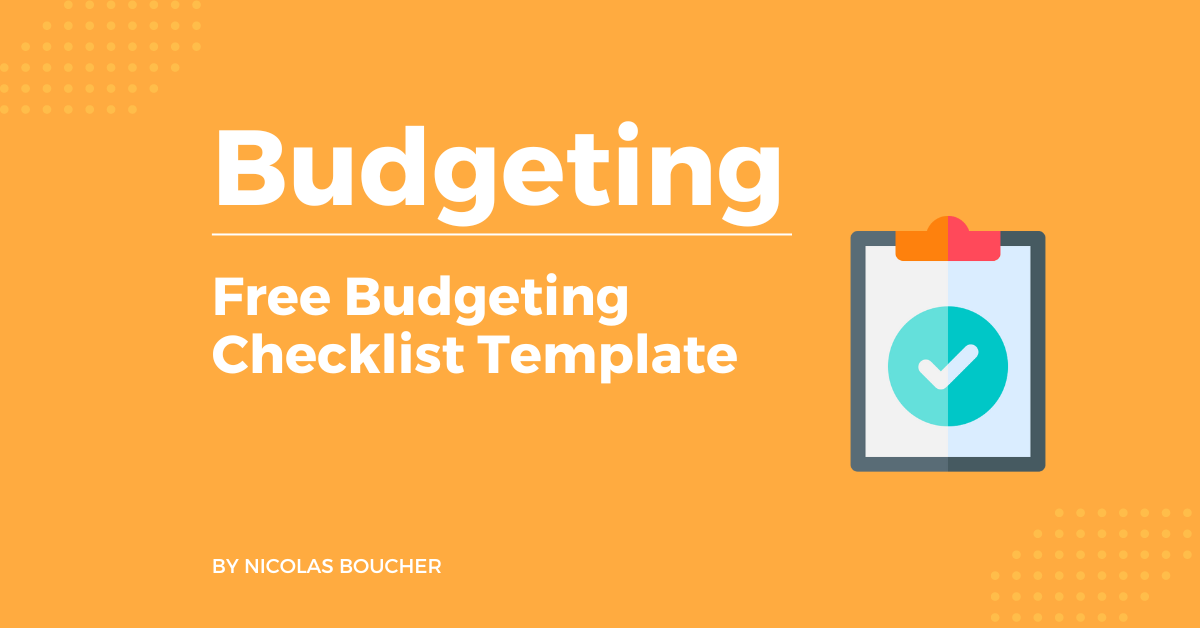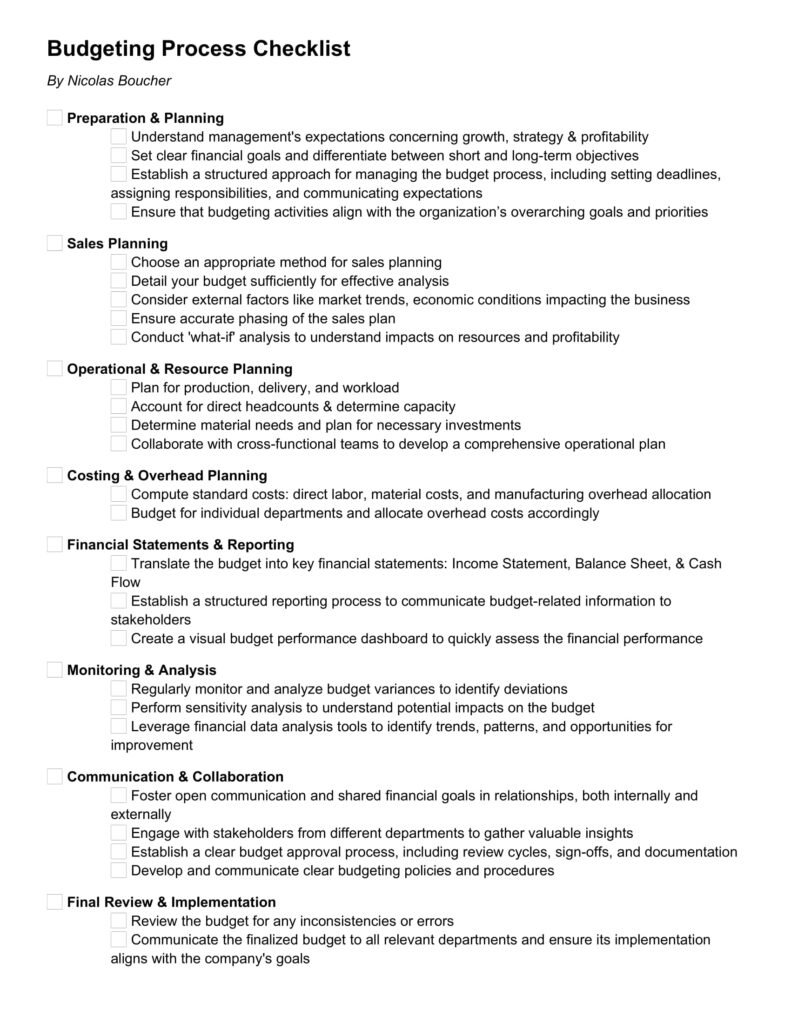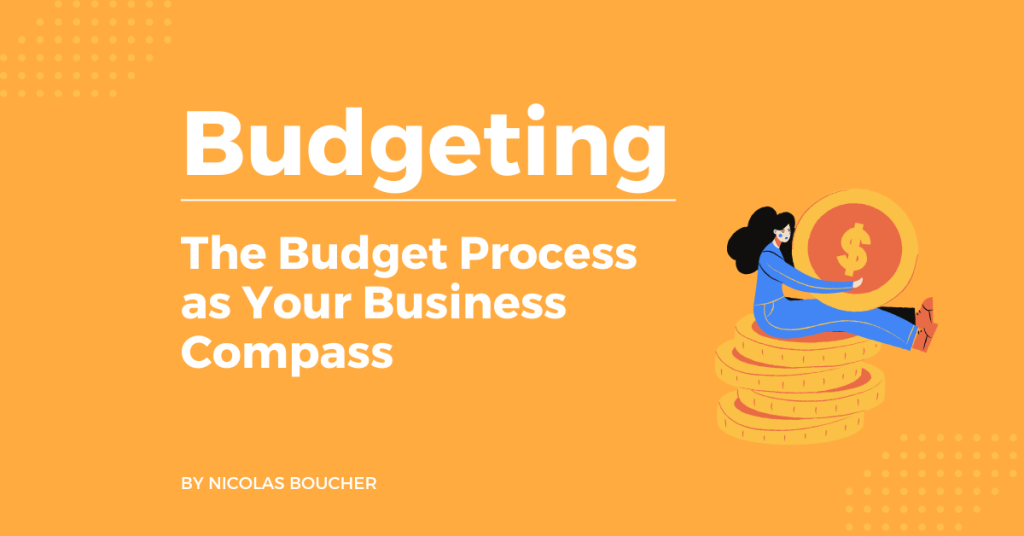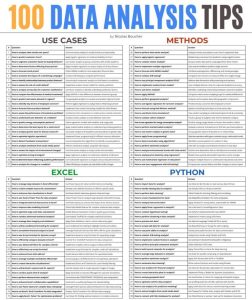Budgeting is more than just crunching numbers. It’s a critical process for financial planning and decision-making, so having a budgeting checklist can help you stay organized.
Understanding the different budgeting methods is essential whether you’re managing a small team or a big company.
This blog post will walk you through the budgeting process and all of the methods you can use.
Table of Contents
The Budgeting Checklist
Are you in the middle of your budgeting process and feeling overwhelmed, or do you just want to ensure you are prepared for the upcoming budgeting?
Don’t worry I’ve got you covered.
My comprehensive budgeting checklist will help you organize and streamline your entire budgeting process, ensuring nothing gets overlooked.
But instead of overwhelming you with details, I’ll give you just a sneak peek.
To dive deeper into each step and get the full checklist, simply download it using the button below.
Download the full free Budgeting ChecklistHere’s what you’ll find inside:
1. Preparation & Planning
- Understand management’s expectations concerning growth, strategy & profitability
- Set clear financial goals and differentiate between short and long-term objectives
- Establish a structured approach for managing the budget process, including setting deadlines, assigning responsibilities, and communicating expectations
- Ensure that budgeting activities align with the organization’s overarching goals and priorities
2. Sales Planning
- Choose an appropriate method for sales planning
- Detail your budget sufficiently for effective analysis
- Consider external factors like market trends and economic conditions impacting the business
- Ensure accurate phasing of the sales plan
- Conduct a ‘what-if’ analysis to understand the impacts on resources and profitability
3. Operational & Resource Planning
- Plan for production, delivery, and workload
- Account for direct headcounts & determine capacity
- Determine material needs and plan for necessary investments
- Collaborate with cross-functional teams to develop a comprehensive operational plan
4. Costing & Overhead Planning
- Compute standard costs: direct labor, material costs, and manufacturing overhead allocation
- Budget for individual departments and allocate overhead costs accordingly
5. Financial Statements & Reporting
- Translate the budget into key financial statements: Income Statement, Balance Sheet, & Cash Flow
- Establish a structured reporting process to communicate budget-related information to stakeholders
- Create a visual budget performance dashboard to quickly assess the financial performance
6. Monitoring & Analysis
- Regularly monitor and analyze budget variances to identify deviations
- Perform sensitivity analysis to understand potential impacts on the budget
- Leverage financial data analysis tools to identify trends, patterns, and opportunities for improvement
7. Communication & Collaboration
- Foster open communication and shared financial goals in relationships, both internally and externally
- Engage with stakeholders from different departments to gather valuable insights
- Establish a clear budget approval process, including review cycles, sign-offs, and documentation
- Develop and communicate clear budgeting policies and procedures
8. Final Review & Implementation
- Review the budget for any inconsistencies or errors
- Communicate the finalized budget to all relevant departments and ensure its implementation aligns with the company’s goals
This checklist is your go-to guide for ensuring a smooth and effective budgeting process.
To get the full details on each step, don’t forget to download the checklist and take your budgeting to the next level.
Download the full free Budgeting ChecklistThe Budget Process
Mastering the budgeting process is essential for effective financial management.
Here are the key steps involved:
1. Set Expectations
This step involves aligning the budget with management’s goals, including growth targets, strategic initiatives, and desired profitability.
Understanding what management expects from the upcoming period is crucial to ensuring that the budget is realistic and supportive of the overall company strategy.
Why is it important?
Setting clear expectations helps guide the entire budgeting process, ensuring that all departments work towards common goals.
It minimizes the risk of misaligned efforts and provides a clear direction for decision-making and resource allocation.
Example
A technology company’s management aims for a 20% revenue growth while investing in a new product line.
They expect to maintain current profit margins despite increased spending on R&D and marketing.
The finance team adjusts the budget to allocate more funds towards R&D and marketing, balancing these investments with cost-control measures elsewhere to meet profitability targets.
2. Plan Sales
Sales planning involves forecasting revenue by selecting the most suitable method, such as trend analysis, market research, or historical data review.
Accurate sales forecasts form the foundation of the entire budget, influencing every subsequent step, from production to cash flow.
Why is it important?
A detailed and accurate sales plan is critical because it drives all other financial planning activities.
Overestimating sales can lead to overproduction and wasted resources, while underestimating can result in missed opportunities.
Accurate planning enables precise analysis and supports strategic decision-making.
Example
A retail clothing brand forecasts sales for the next year by analyzing historical sales data, current market trends, and competitor actions.
They decide to increase their online sales efforts due to an observed shift in customer behavior towards e-commerce.
This forecast drives decisions on inventory purchases, marketing strategies, and staffing needs for both online and physical stores, ensuring resources align with expected sales growth.
3. Operational Plan
The operational plan covers the detailed planning of production schedules, delivery logistics, and workload requirements to meet the sales forecast.
This includes assessing the need for raw materials, labor, and other resources necessary to fulfill customer demand.
Why is it important?
This step is essential for ensuring that operations are optimized and cost-effective.
It helps identify bottlenecks, improve production efficiency, and ensure timely delivery of products or services, directly impacting customer satisfaction and cost management.
Example
A manufacturing company needs to produce 10,000 units of a new product in the next quarter.
They develop a detailed operational plan that includes procurement of raw materials, scheduling of production shifts, and coordinating with suppliers to ensure timely delivery of components.
This plan helps the company optimize production efficiency, reduce downtime, and meet delivery deadlines, minimizing costs while maximizing output.
4. Plan Resources
This step involves determining the resources needed, such as personnel, materials, and equipment, and planning investments.
It includes estimating direct headcounts, assessing capacity needs, and identifying required capital investments to support operations.
Why is it important?
Proper resource planning ensures that the company has the right amount of resources at the right time, avoiding both shortages and excesses.
This step helps manage costs, optimize resource allocation, and ensure that the organization is adequately equipped to meet its operational goals.
Example
A fast-growing software firm plans to expand its customer support team by hiring 20 new employees to handle increased demand.
They also assess the need for additional software licenses and workspaces.
By planning these resources in advance, the company ensures they are equipped to meet customer needs without straining current teams, enhancing service quality and maintaining customer satisfaction.
5. Compute Standard Costs
Calculating standard costs involves determining the expected costs of direct labor, materials, and overheads associated with production.
This step also includes setting benchmarks for cost control and identifying cost-saving opportunities.
Why is it important?
Computing standard costs provide a basis for measuring performance against budgeted costs, highlighting variances that need attention.
It helps control production expenses, ensuring that the company remains profitable while maintaining product quality.
Example
A food manufacturing company calculates standard costs for producing a new snack item, including direct labor, raw materials (like flour and seasoning), and manufacturing overhead, such as equipment maintenance and utilities.
This calculation helps set a benchmark for production costs, allowing the company to monitor actual costs against standards, quickly identifying and addressing variances that could affect profitability.
6. Plan Overhead
Overhead planning involves preparing departmental budgets for all indirect costs, including administrative, marketing, and facility expenses.
This step includes allocating these costs accurately across departments to ensure a comprehensive understanding of total expenses.
Why is it important?
Proper overhead planning ensures that all costs are accounted for, preventing budget shortfalls.
By allocating overhead accurately, companies can better manage their operating margins and make informed pricing and cost-cutting decisions.
A healthcare provider prepares departmental budgets for various indirect costs, such as facility maintenance, administrative salaries, and IT support.
Each department submits its forecasted expenses, which are then reviewed and adjusted by the finance team.
By carefully planning and allocating overhead, the provider ensures that each department operates within its means, avoiding unexpected expenses that could disrupt financial stability.
7. Transform The Budget into Financial Statements
This step involves translating the budget into financial statements such as the Income Statement, Balance Sheet, and Cash Flow Statement. It also includes communicating the results and outlining an action plan for performance monitoring.
Why is it important?
Preparing financial statements from the budget provides a clear view of the company’s financial health and anticipated performance.
It enables stakeholders to assess the plan’s viability, make adjustments if needed, and set actionable goals.
The budget is also effectively communicated to all relevant parties, ensuring alignment and accountability across the organization.
Example
After budgeting, a construction company compiles its expected financial statements, including an Income Statement showing projected revenues and expenses, a Balance Sheet reflecting anticipated asset growth from new projects, and a Cash Flow Statement forecasting cash inflows and outflows from ongoing contracts.
These financial statements provide a clear picture of the company’s future financial position, helping management make strategic decisions, secure financing, and communicate plans to stakeholders like investors and lenders.
Bonus: Prepare and organize your budgeting process with my budgeting checklist.
Download the full free Budgeting ChecklistWhy Is Budgeting Important?
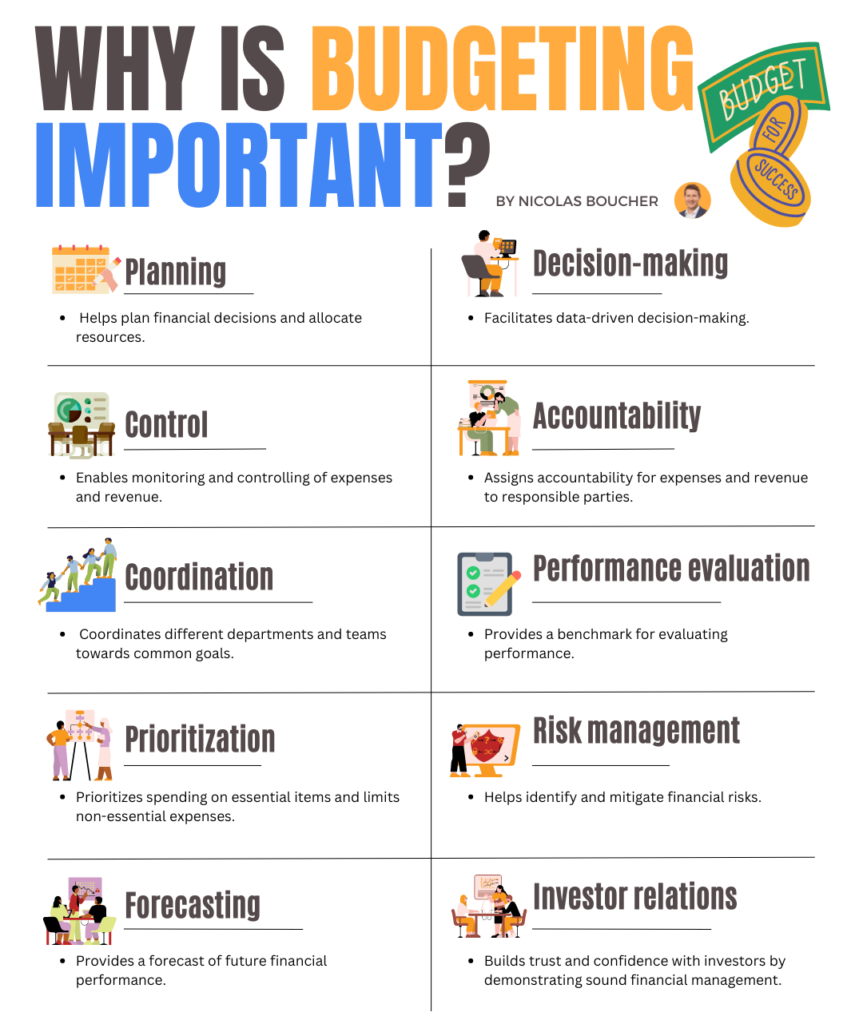
Budgeting plays a crucial role in an organization’s success.
Here are the ten main advantages:
Planning
Budgeting provides a structured approach to planning by allocating resources, such as funds, personnel, and materials, to support strategic initiatives and organizational growth.
By clearly outlining where resources will be spent, businesses can ensure that key projects and goals are adequately funded.
Effective planning through budgeting ensures that an organization can proactively manage its growth, avoid resource shortages, and respond quickly to opportunities.
It helps prioritize investments in areas that drive the most value, such as product development, market expansion, or operational improvements.
Control
Budgets serve as a benchmark for tracking actual performance against planned objectives.
They allow organizations to monitor expenses and revenue closely, identifying variances that need attention, whether it’s overspending or lower-than-expected income.
This control mechanism helps maintain financial discipline, preventing wasteful spending and ensuring that revenue targets are met.
Organizations can make timely adjustments, maintain profitability, and optimize cash flow management by keeping financial activities aligned with the plan.
Coordination
Budgeting requires input and collaboration from various departments, ensuring that all parts of the organization are working towards the same financial and strategic objectives.
This alignment facilitates better communication and coordination of activities across the company.
By aligning departments, budgeting eliminates silos and fosters a unified approach to achieving business goals.
This leads to more efficient use of resources, improved interdepartmental cooperation, and a shared understanding of the company’s priorities and financial constraints.
Prioritization
A budget forces organizations to evaluate their spending priorities, focusing on essential items and strategic investments that drive business success.
It helps in making tough choices about where to cut costs or increase funding.
Prioritization ensures that resources are directed toward the most critical areas, such as product innovation, customer acquisition, or operational efficiency.
This focus helps businesses avoid unnecessary expenditures and maximize the impact of their spending.
5. Forecasting
Budgeting involves forecasting future financial performance, including expected revenue, expenses, and cash flows.
This forecast acts as a roadmap, guiding the organization toward its short-term and long-term financial goals.
A clear forecast helps set realistic targets, anticipate challenges, and prepare for future needs.
It enables organizations to make informed strategic decisions, such as expanding into new markets or scaling operations, with a clear understanding of the financial implications.
6. Decision-Making
Budgets provide valuable data that support decision-making at all levels of the organization.
By analyzing budget versus actual performance, leaders can identify trends, assess financial health, and make informed decisions about future actions.
Data-driven decisions reduce the reliance on guesswork, enhancing the quality of choices related to investments, cost-cutting measures, and strategic shifts.
This leads to better outcomes and a more agile, responsive business.
7. Accountability
Budgeting assigns financial targets and responsibilities to specific departments or individuals, creating accountability for performance.
This helps ensure that everyone understands their role in achieving the company’s financial objectives.
Accountability drives better performance as teams and individuals strive to meet or exceed their budgetary targets. It fosters a culture of responsibility, where financial stewardship is taken seriously at every level of the organization.
8. Performance Evaluation
Budgets serve as a benchmark against which the performance of teams, departments, and projects can be evaluated.
Regular budget reviews help assess whether performance is on track and identify areas for improvement.
Performance evaluation through budgeting helps recognize achievements and address underperformance.
It provides insights into which units are driving success and where additional support or corrective action is needed, ultimately improving overall efficiency.
9. Risk Management
Explanation: Budgeting helps identify potential financial risks, such as cash flow shortages, cost overruns, or market downturns.
By anticipating these risks, organizations can develop contingency plans and implement measures to mitigate them.
Proactive risk management through budgeting minimizes the impact of financial disruptions, protecting the organization’s stability and enabling it to navigate challenges with greater confidence.
It ensures that there are safeguards in place to handle unexpected financial pressures.
10. Investor Relations
A well-structured budget demonstrates to investors that the organization is committed to sound financial management.
It provides transparency into how the company plans to achieve its financial targets, manage expenses, and grow its profitability.
Building investor trust is crucial for securing funding and support for future growth.
Clear and credible budgeting reassures investors that their capital is being managed responsibly, enhancing the company’s reputation and access to financial markets.
Last Words
Each budgeting method has its strengths and weaknesses.
The best approach for your organization depends on your specific goals, resources, and the financial environment you operate in.
By understanding these methods, you can choose the one that aligns best with your needs—or even combine them to get the best of all worlds.
To ensure that you are prepared for your upcoming budgeting process, download my budgeting checklist now!
Download the full free Budgeting ChecklistFAQ
Q: Why do I need a budgeting checklist?
A: A budgeting checklist helps you stay organized and ensures that no critical steps are missed during the budgeting process. It serves as a guide to systematically approach budgeting, from planning and forecasting to monitoring and communication. The checklist streamlines the entire process, saves time, and reduces the risk of errors, making it easier to align the budget with your organization’s goals.
Q: When should I use a budgeting checklist?
A: You should use a budgeting checklist at the start of the budgeting cycle and continue referring to it throughout the process. It’s especially useful during annual budget planning, quarterly reviews, or whenever you need to make significant adjustments due to changes in business strategy or market conditions. The checklist helps maintain focus and ensures consistent application of best practices every time you budget.
Q: What are the risks of not having a budgeting checklist?
A: Without a budgeting checklist, you risk missing key steps that could lead to inaccurate forecasts, misaligned departmental goals, overlooked expenses, and a lack of coordination between teams. This can result in budget overruns, inadequate resource allocation, and poor decision-making. Ultimately, it may lead to financial instability, decreased performance, and a failure to achieve strategic objectives.
Q: What should be included in a budgeting checklist?
A: A comprehensive budgeting checklist should cover preparation and planning, sales planning, operational and resource planning, costing and overhead planning, financial statements and reporting, monitoring and analysis, communication and collaboration, and a final review and implementation phase. Each section helps ensure a thorough budgeting process, aligning financial plans with business strategies, and providing clear steps for accountability and performance evaluation.
Q: How can a budgeting checklist improve decision-making?
A: A budgeting checklist facilitates data-driven decision-making by providing a structured approach to budgeting. It helps in setting clear financial targets, monitoring performance, and identifying variances early. By having a well-documented process, you can analyze financial data more effectively, make timely adjustments, and prioritize spending based on strategic needs. This structured approach reduces guesswork and enhances the quality of financial decisions, ultimately driving better business outcomes.


